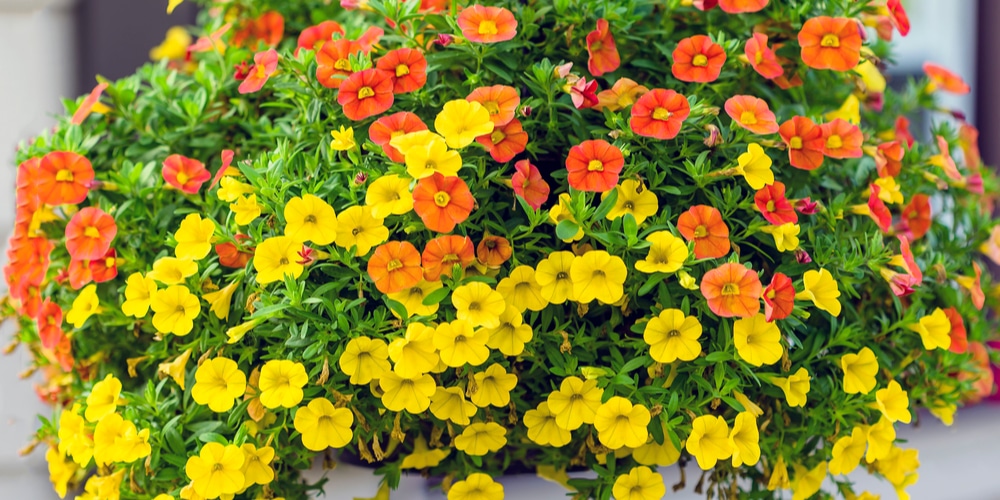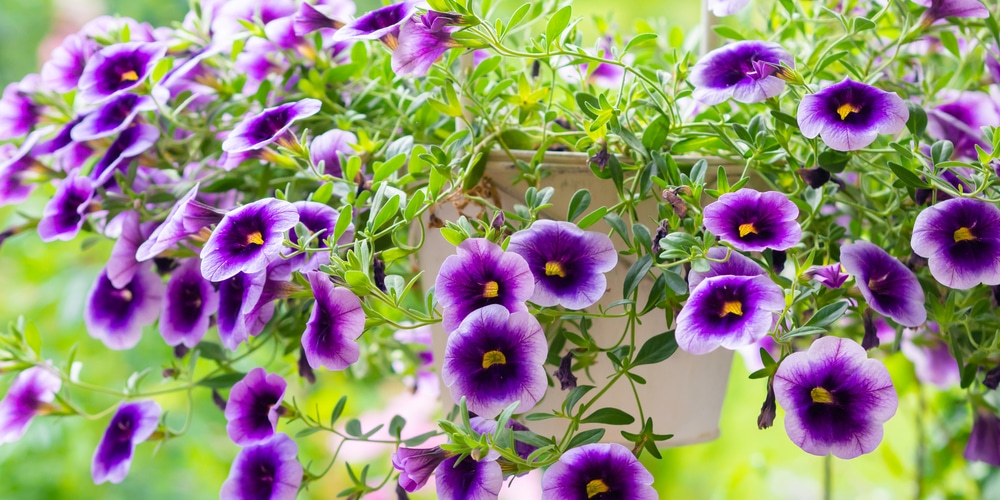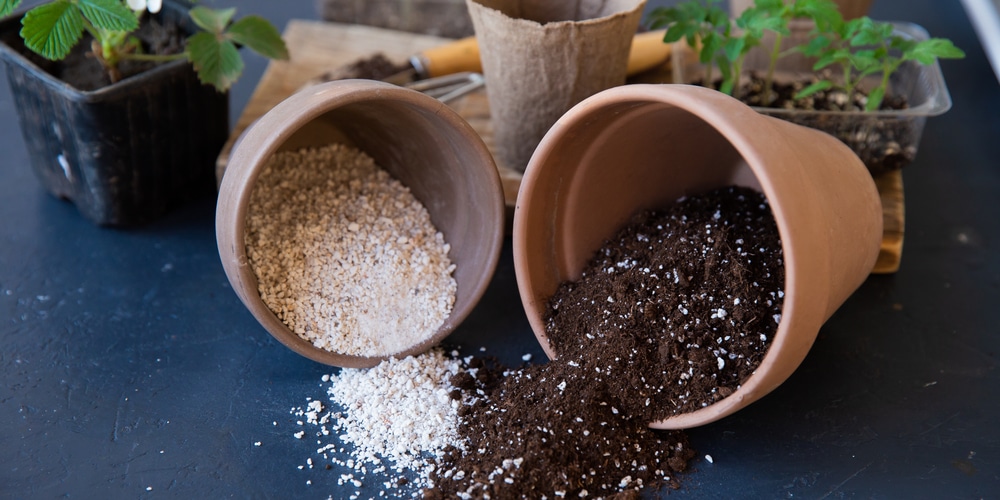If you are looking for a flowering plant that is easy to care for, you should consider growing Calibrachoa in hanging baskets. These plants are also known as million bells, and they come in a variety of colors, including pink, red, purple, blue, and white.
This guide will discuss everything you need to know about growing these beautiful blooms. We will cover topics such as planting guides and care guides.
The Calibrachoa

The Calibrachoa, also known as the Million Bells, is a pretty little plant from South America. It is a fast-growing plant that is perfect for hanging baskets and containers.
The Calibrachoa produces an abundance of small, brightly-colored flowers resemble petunia blossoms. The flowers bloom continuously throughout the summer months, adding a splash of color to any garden or patio.
Although the Calibrachoa is easy to care for, it requires regular deadheading to promote continuous flowering. The Calibrachoa will brighten up any outdoor space with a bit of love and attention!
Flower Power
The Calibrachoa, also known as the million bells, is a versatile and colorful plant perfect for adding a touch of brightness to any garden. Although they are native to South America, they can be easily grown in most parts.
One of the best things about Calibrachoa is that they have a very long blooming season, often flowering from early spring to the first frost. If cared for properly, some plants will even bloom year-round.
There are two main types of Calibrachoa: those with single flowers and those with double flowers. Single-flowered varieties tend to be more compact and produce fewer blooms, while double-flowered varieties are slightly taller and produce more blooms.
However, both types are equally easy to care for and will flower prolifically if given the right conditions.
When it comes to planting Calibrachoa, it is best to start them in pots or containers. This will allow them to establish themselves before being transplanted into the ground.
Care And Maintenance
The Calibrachoa is a beautiful yet delicate flower. This petite bloom is often used in hanging baskets or as an accent flower in garden beds. While the Calibrachoa is relatively easy to care for, it does require regular maintenance to thrive. Here are some tips for keeping your Calibrachoa healthy and happy:
Watering requirements
One of the great things about Calibrachoa is that it does not require a lot of water to thrive. If you water it too often, the roots will start to rot. The best way to water a Calibrachoa is to let the soil dry out completely between watering.
This will help to prevent root rot and encourage the plant to develop strong roots. When you water the plant, make sure to soak the soil thoroughly. The Calibrachoa is a hardy plant that can tolerate some neglect, but it is essential to follow these watering guidelines if you want it to thrive.
Soil requirements
Though it is relatively easy to care for, the Calibrachoa does have specific soil requirements to thrive. The ideal soil for a Calibrachoa is loose, well-draining, and rich in organic matter.
The plant prefers a slightly acidic to slightly alkaline pH level, and it will not tolerate boggy or waterlogged conditions. If the soil is too dense or compacted, it can impede the plant’s growth and cause the leaves to be yellow. Amendments such as peat moss or compost can help create the ideal growing environment.
Light requirements
This plant prefers full sun to partial shade, and it will not bloom properly if it does not receive enough light. If you are growing the Calibrachoa indoors, place it near a south-facing window. You may need to supplement your Calibrachoa’s light with grow lights during the winter months to ensure that it receives enough sunlight to bloom.
Fertilizer requirements
The Calibrachoa should be fertilized every two weeks with a water-soluble fertilizer, preferably containing nitrogen, phosphorous, and potassium. It’s important to dilute the fertilizer to half strength, as too much fertilizer can damage the plant. Once the plant begins to flower, it’s also essential to add a bloom booster fertilizer to help encourage more flowers.
Calibrachoa in hanging baskets: Conclusion
The Calibrachoa is a beautiful, easy-to-care-for plant that will add color and life to your garden. By following the tips in this guide, you can ensure that your Calibrachoa thrives in a hanging basket for many years to come.
Related Article: When Do Geranium Bloom?

